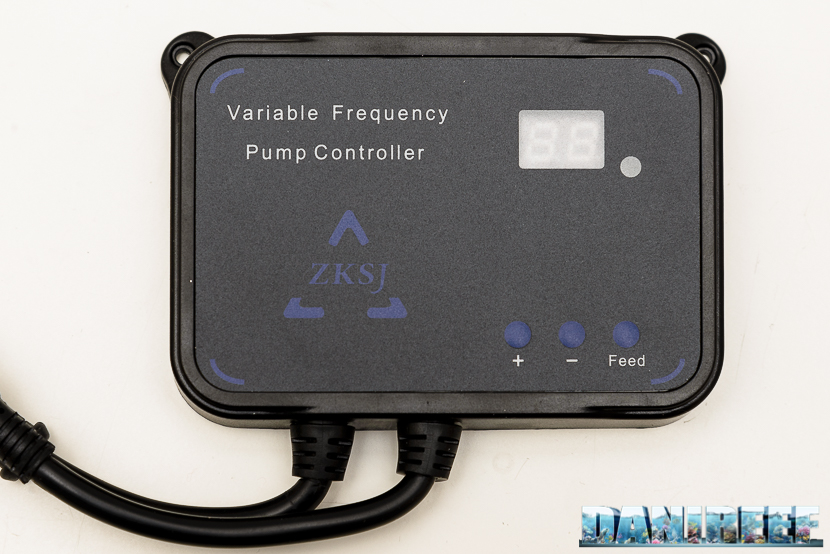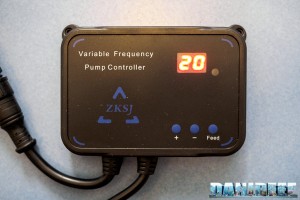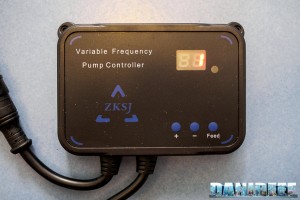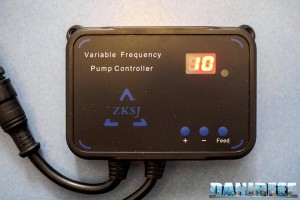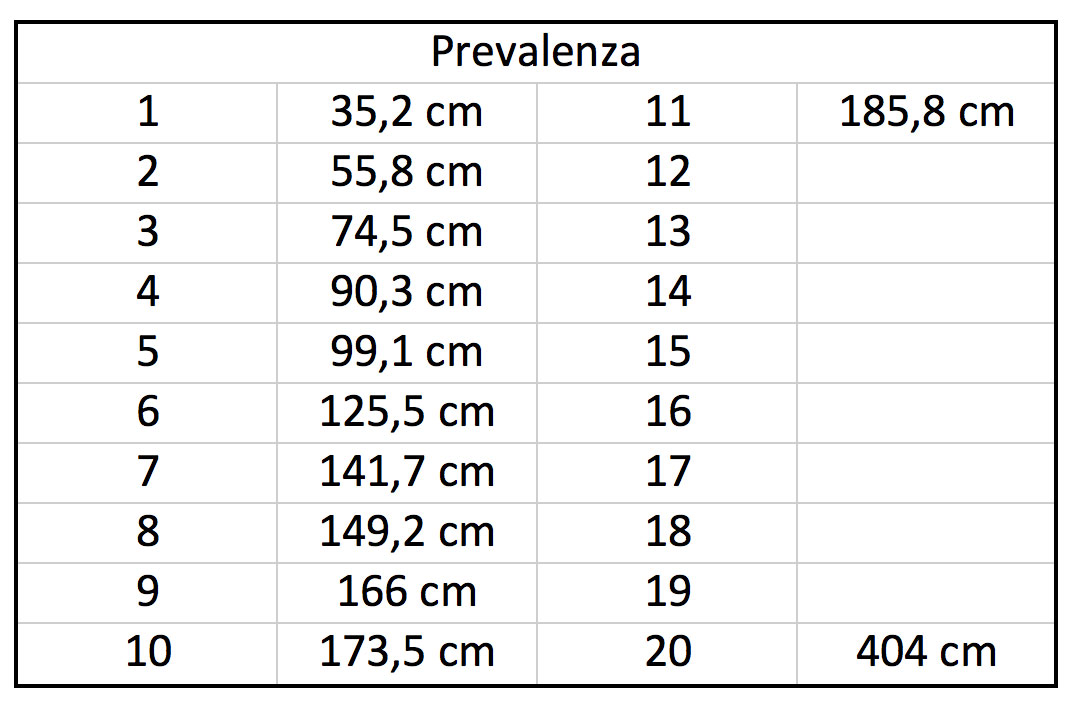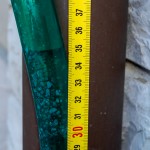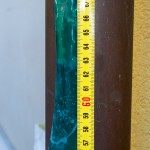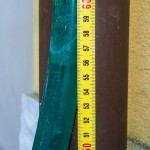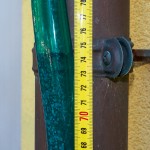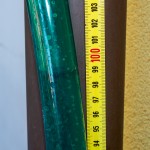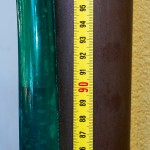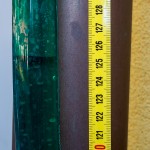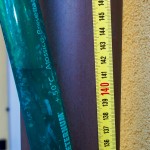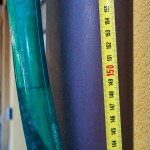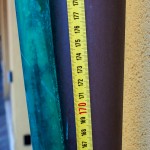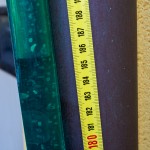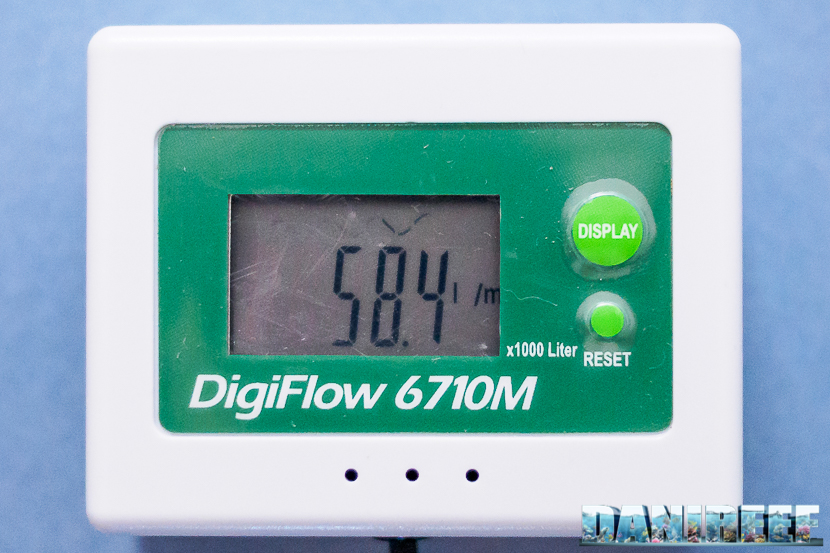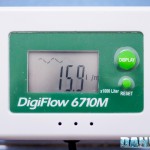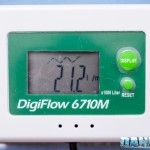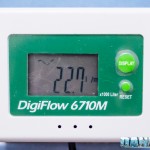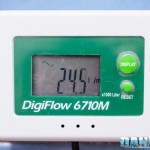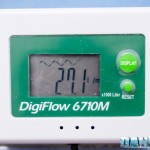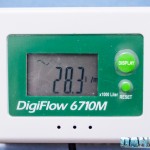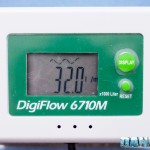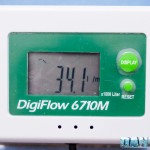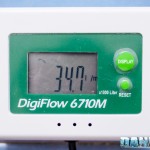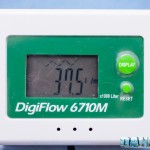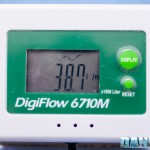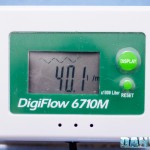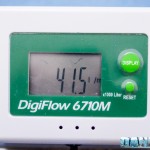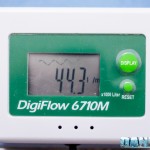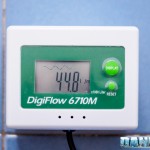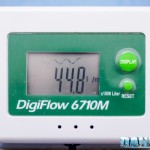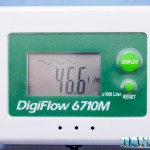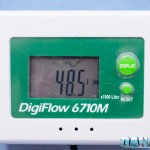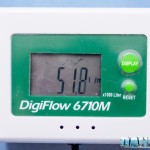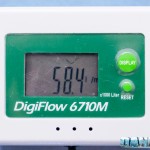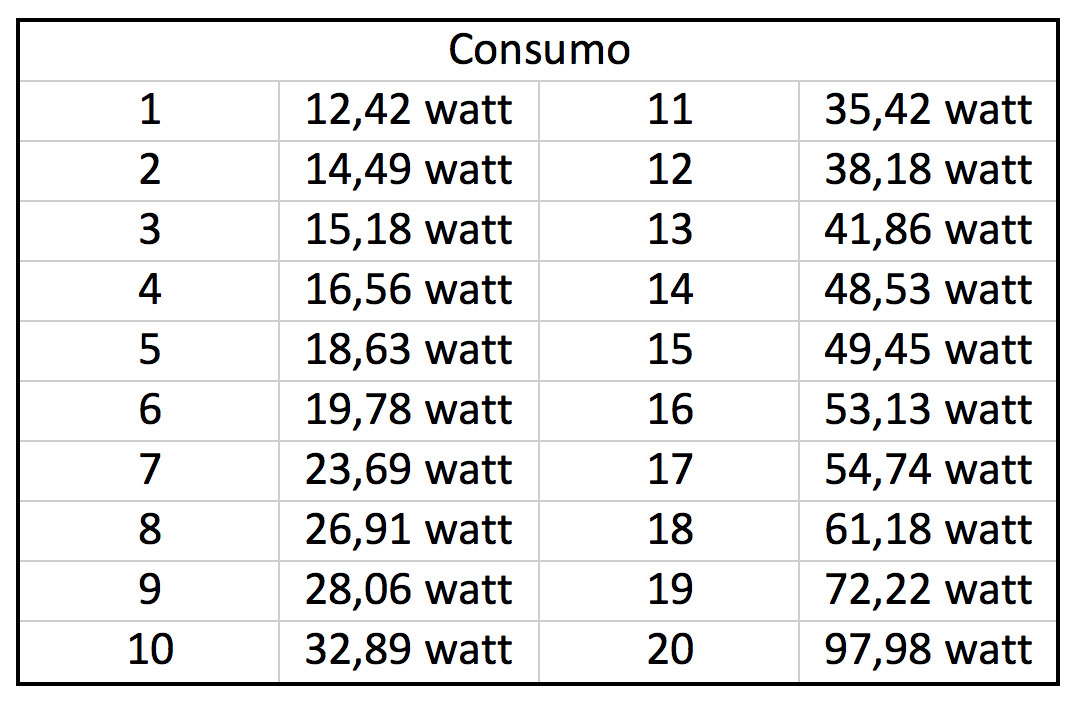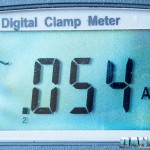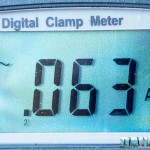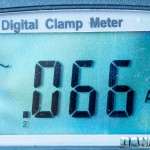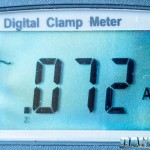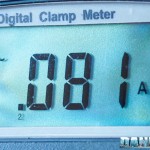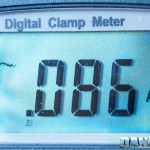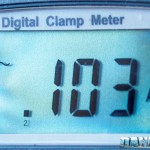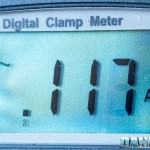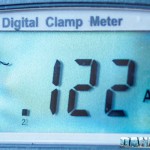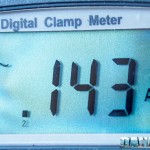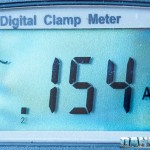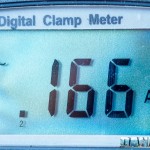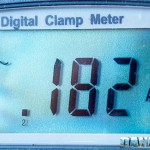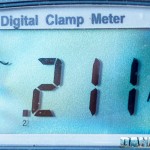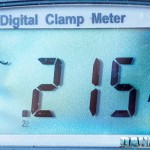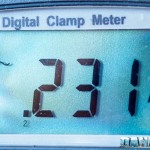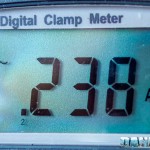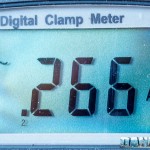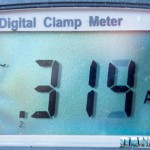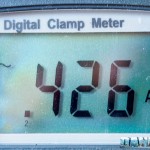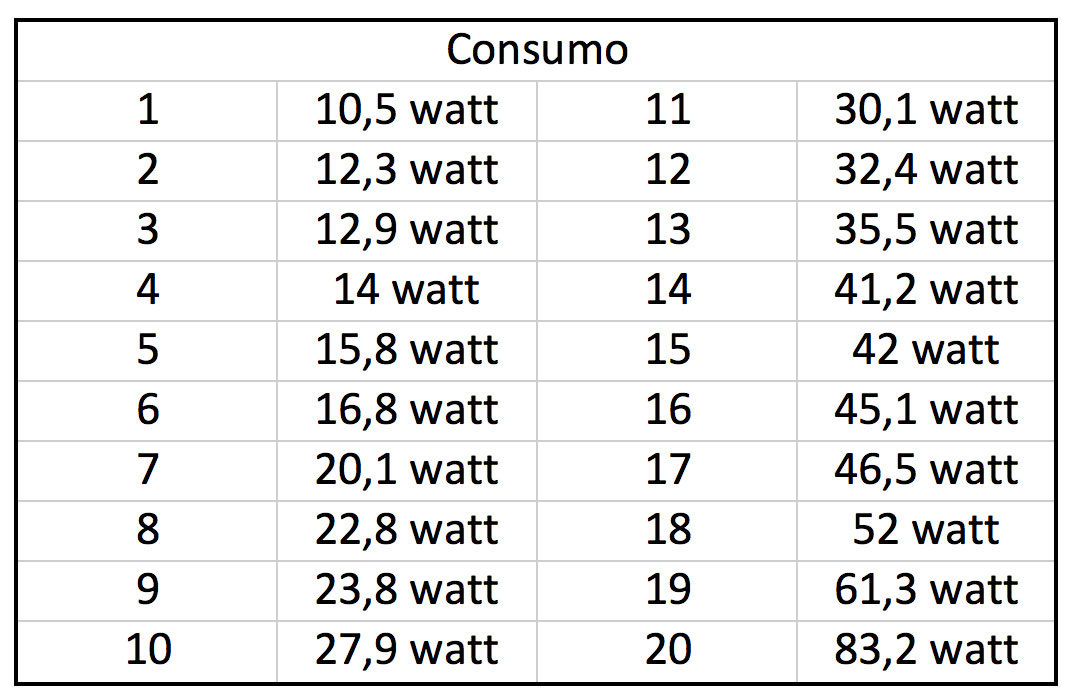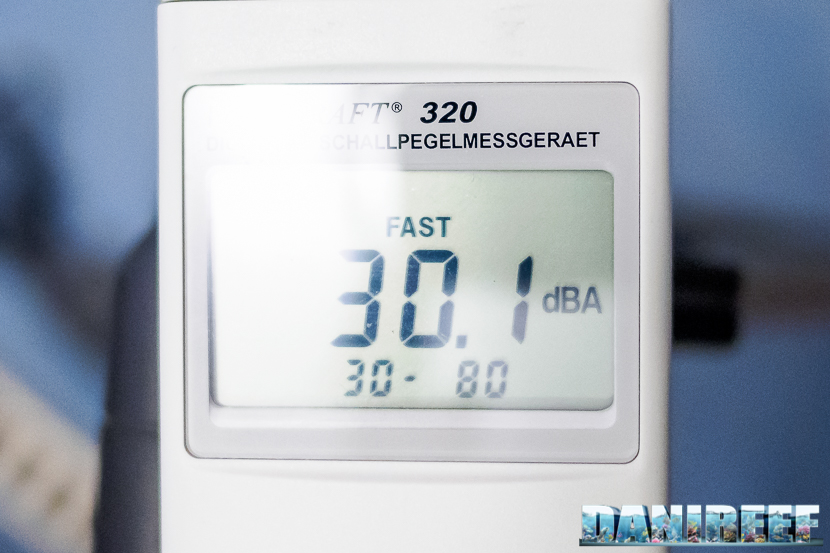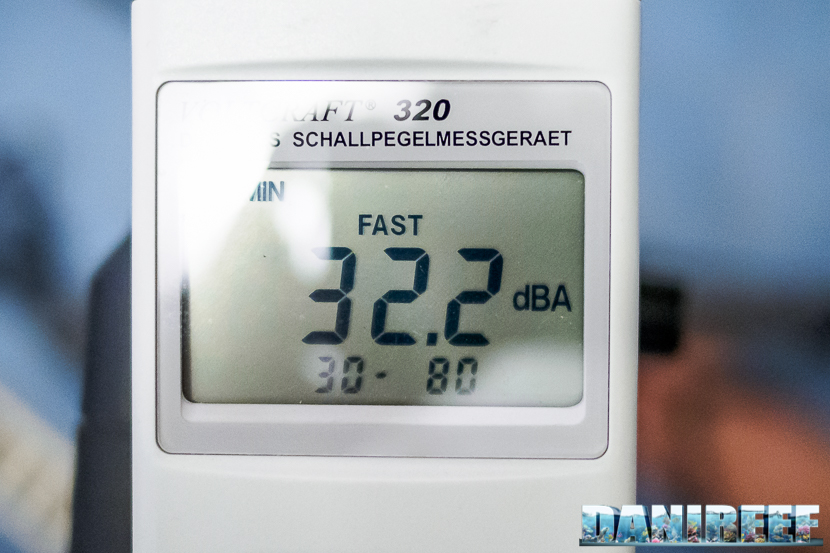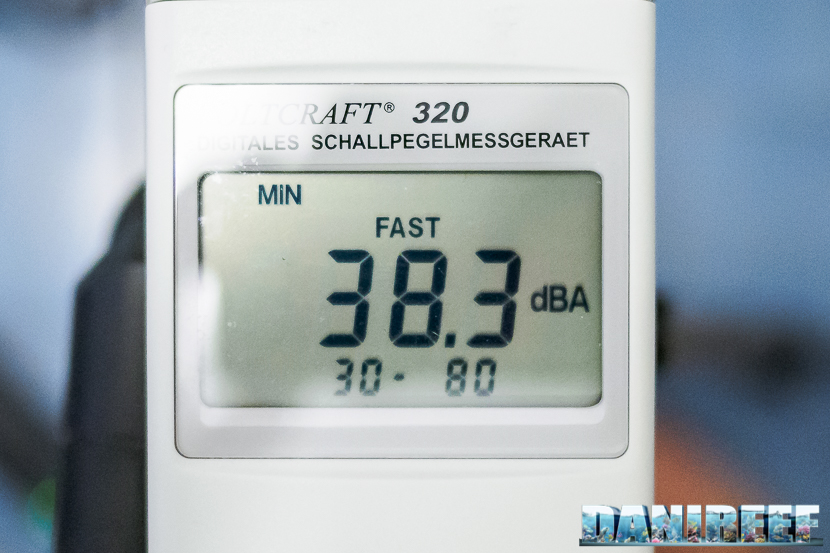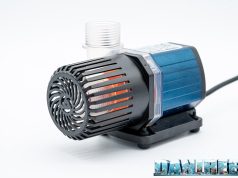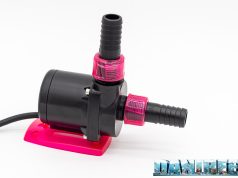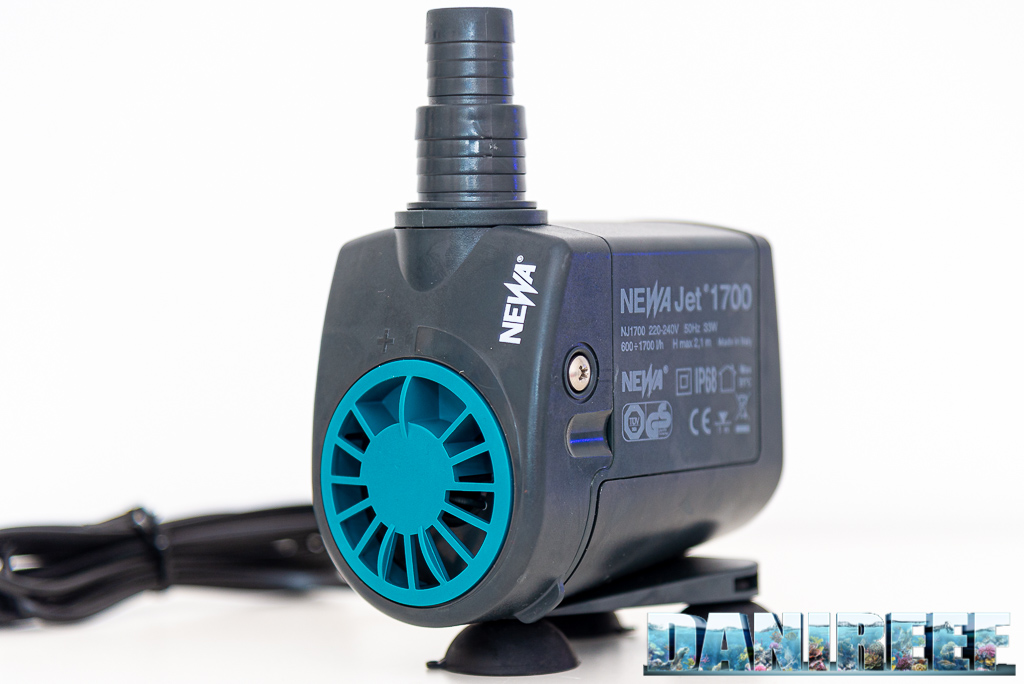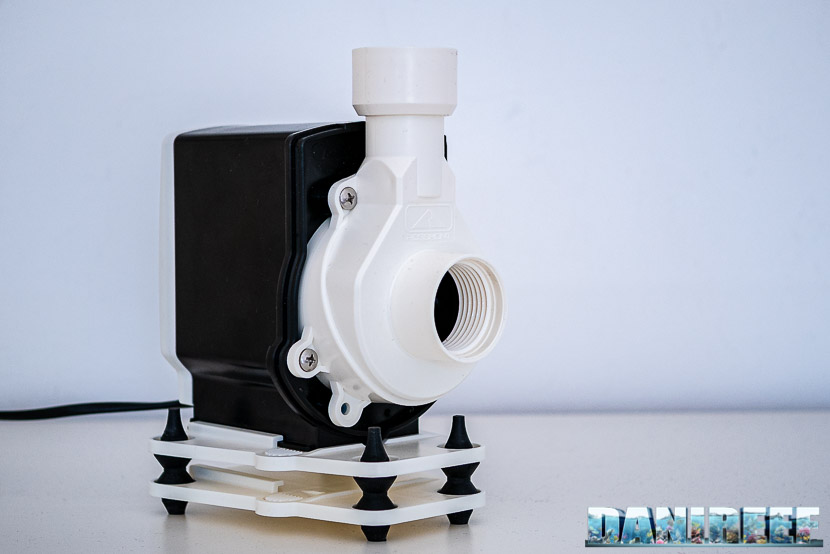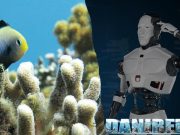The Trial
We used the Corallinea Big World BQ-5000L for a few months in our tank as a return pump, appreciating its low noise compared to the flow rate and head, and the very useful feature that allows us to adjust it with the dedicated controller. From this point of view there is nothing to say about but for the pump’s lightness which can make it move around, it might thus be necessary to find a why to stick it to the sump to avoid it touching the sump walls and producing high noise due to vibrations.
As you can see above the controller is very simple, there are plus and minus buttons to adjust the pump power and the feed button to turn it off momentarily for feeding fishes or corals.
Let’s now see how it behaved when we started taking our measurements.
Measurements
Hydraulic Head
The first thing we measured was the pump head. This is usually very easy to do, but this time it was a bit more challenging seen that the head declared is of 5 meters. Moreover, the pump has 20 different functioning steps, and we tried to measure the head for each of them.
Unfortunately we were able to measure the first 11 functioning steps and the last one, which is also the most important one. In order to do this we placed the pump in a bucked filled with water and we connected it to a gardening tube which we held in a vertical position. We then measured the length reached in the tube by the water. Because of the height required, we attached the tube to the house drainpipe and then we held the meter with the 0 value at the water level in the bucket. We measured the first 11 steps and then got up to the roof from which we measured the highest head.
For those who wish to verify the values here are the pictures of each measurement.
The maximum head value measured was 404 cm, the 154 cm read to which we need to add the 250 cm of the “meter end” reference.
Flow rate measurements
Measuring the flow rate was easy thank to the new flow meter DigiSavant DIGIFLOW 6710M. It was sufficient to point the flow straight into the flow meter via connection tubes and read the measure on the display in liters per minute, we then calculated liters per hour.
We measured flow rate for each functioning step in order to see a complete picture of the changing flow rate.
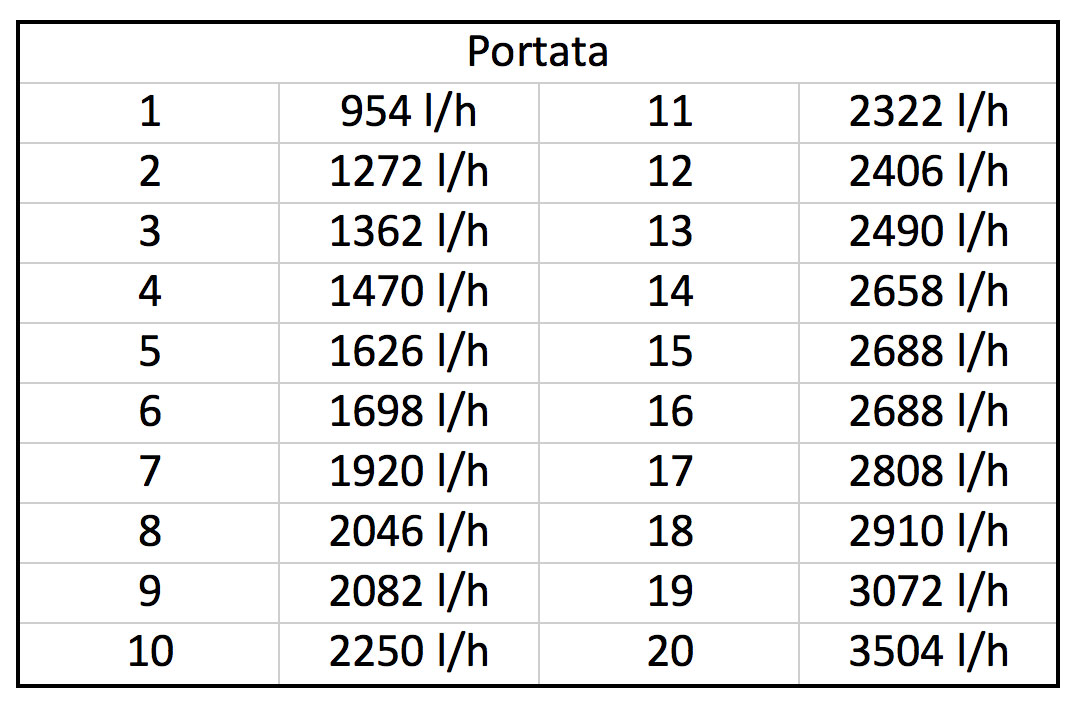
The maximum rate measured was 3504 l/h (or 58,4 l/m*60), quite low if compared to the 5000 l/h declared.
In the next pictures you can read all the measurements for yourself:
Power Consumption
Instant power consumption is more difficult to measure, we report it out of curiosity.
In order get the measurements I used a current probe which recorded a maximum electric current of 0,426 A. This is only a partial measure, as it has been impossible to record the power factor (cosφ) which could have told us more about the actual consumption.
The adsorbed current, or the power consumption, results as follows:
Corallinea Big World BQ-5000L pump: 0,426 A x 230 V = 97,98 watt x cos(fi)
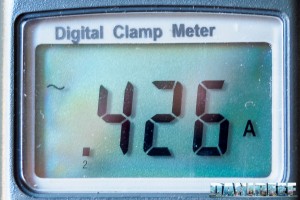
Usually a pump with a neodymium magnet, like Corallinea, has a cos(fi) with a value around 0,85. In this case the energy consumption of the Corallinea BQ-5000L is of 97,98 watt x 0,85 = 83,3 watt. It’s a very close value to the 80 watt declared. We should also consider that the cos(fi) contribution was only assumed.
The apparent current of 14,68 watt (97,98-83,3watt) will not be counted by our home electrical counter, so we won’t spend more. Moreover, this happens with any pumps, Corallinea is not an exception.
Considering a power consumption of 83.3 watt and the energy cost of 0.27 euro per kwh (more or less in Italy at the moment of this review), we could use this pump continuously for a whole year for a consumption 730 kwh, for a total cost of 197 euros per year, or 16.4 € per month.
In the following table you can see the resulting consumption, with cos(fi) corrections excluded.
As usual the Ampere measurements, which needs to be multiplied for 230 volt and cos(fi).
The real consumption results as following, and we should use these for our later estimates.
The first interesting thing we notice is that at point 1 velocity we have 10 watt consumption, 35 cm head and 954 liters per hour. At velocity 4 consumption doubles to 20 watt, but the head gets up to 90 cm and the flow rate to 1500 liters per hours. At a power consumption of 40 watt (velocity point 14) we have 2658 liters per hour and a 263 cm head. At 80 watt, 4 meters head and 3500 liters per hour.
Noise trial
We measured the acoustic pressure at 1 meter from the pump, which was placed in the tank where we also carried out the flow rate trials.
Environmental noise was measured: 30.1 dB.
We switched the pump on and measured the noise at velocity point 10 and 20.
At velocity 10 the pump is barely audible, with only 32.2 dB noise.
At velocity 20 the noise increases to 38.3, 8x noisier than the environmental noise only. It’s still an acceptable value considering the power of this pump. Moreover the noise comes from the electrical engine rather than vibrations, being therefore easier to be concealed by the aquarium cabinet.
To measure the noise I used, as always, the professional phonometer VOLTCRAFT 320, digital phonometer IEC 651 Type II which has been sufficiently accurate seeing the results. Considering the type of noise we needed to measure, all the measures were recorded with dBA wave attenuation.


